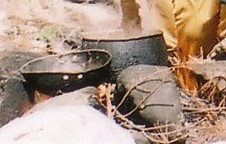Between boots and sandals for an outdoor trek, the former would provide more support to the foot and ankles. However, for trips where your feet will get wet, sandals may be a better option. A good pair of sandals can be your backup if your boots give way during the trip. They are also good for use at campsite where the water source and latrine is a distance away.
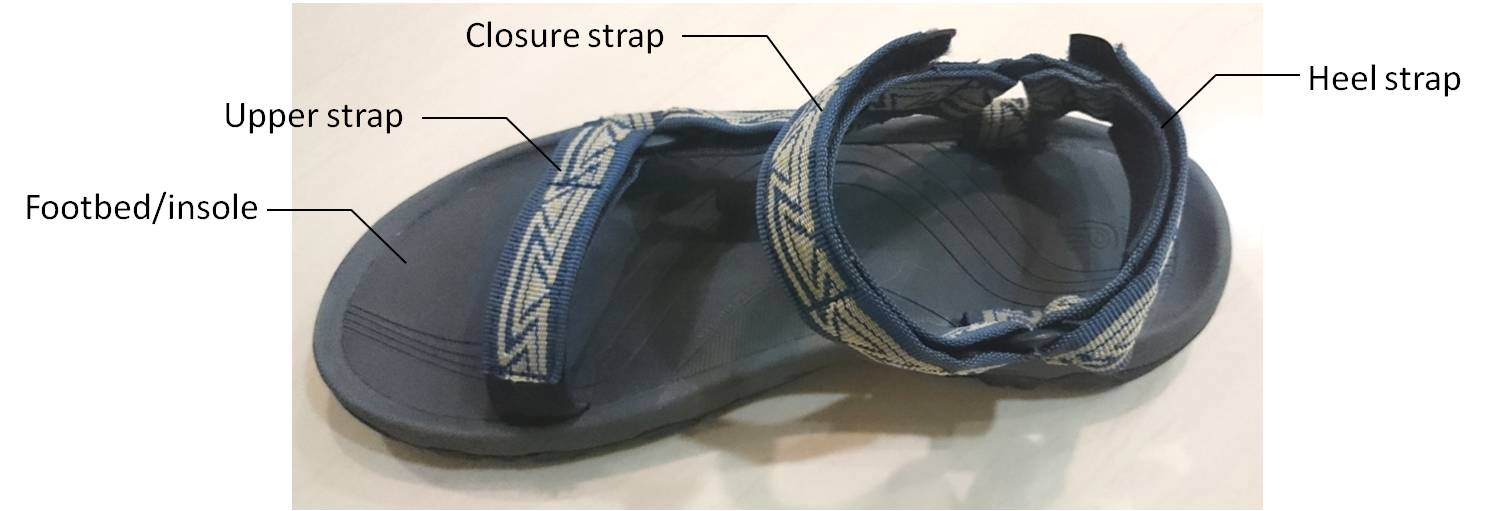 Sandal parts |
In the market, there are sandals from different brands, models and prices. It is not always the case that expensive and advertised as outdoors sandals are always designed adequately for its intended use. When choosing a pair of sandals, there are some basic criteria that are worth looking out for.
Straps and Upper
The straps and upper of the sandals are the main support holding the sandals to your feet. Typical open-toe outdoor sandals would have an upper, a closure strap and a heel strap. For street sandals, it is common to find padded linings which feel more comfortable. However, in outdoors sandals, there is very little padding on the lining for a good reason. Extra paddings mean more weight on the sandals and they also absorb more water from rivers, perspiration or rain which will add on to the weight. Outdoors sandals are expected to take a lot abuse and the upper and straps will have to withstand much more pressure as it takes on rough and uneven terrains. The padding will be worn off or permanently compressed very quickly.
The overall design and construction of the straps and upper will affect the ease of putting on and comfort. Designs with more straps (eg. Chaco sandals) running over the top of your foot will be more comfortable as they provide more support but putting on may be slower and may be less convenient to use at campsite. Simpler designs with a strap over the start of the toes, a closure strap and a heel strap are easier to put on and take off. Some designs come with a heel strap can be released completely, turning the sandals into a slippers. This makes it easy to slip on and off at campsite.
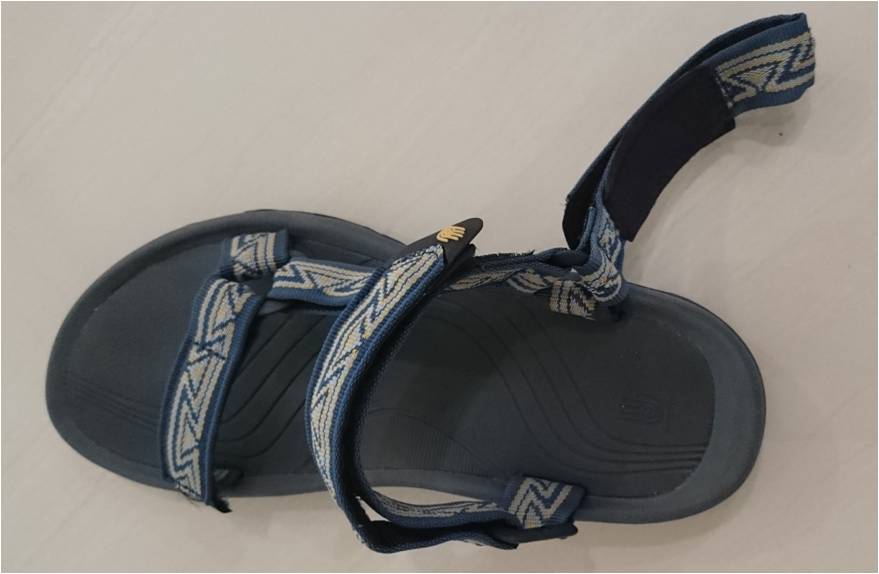 Sandal converted to slippers by unbuckling heel strap |
Sole
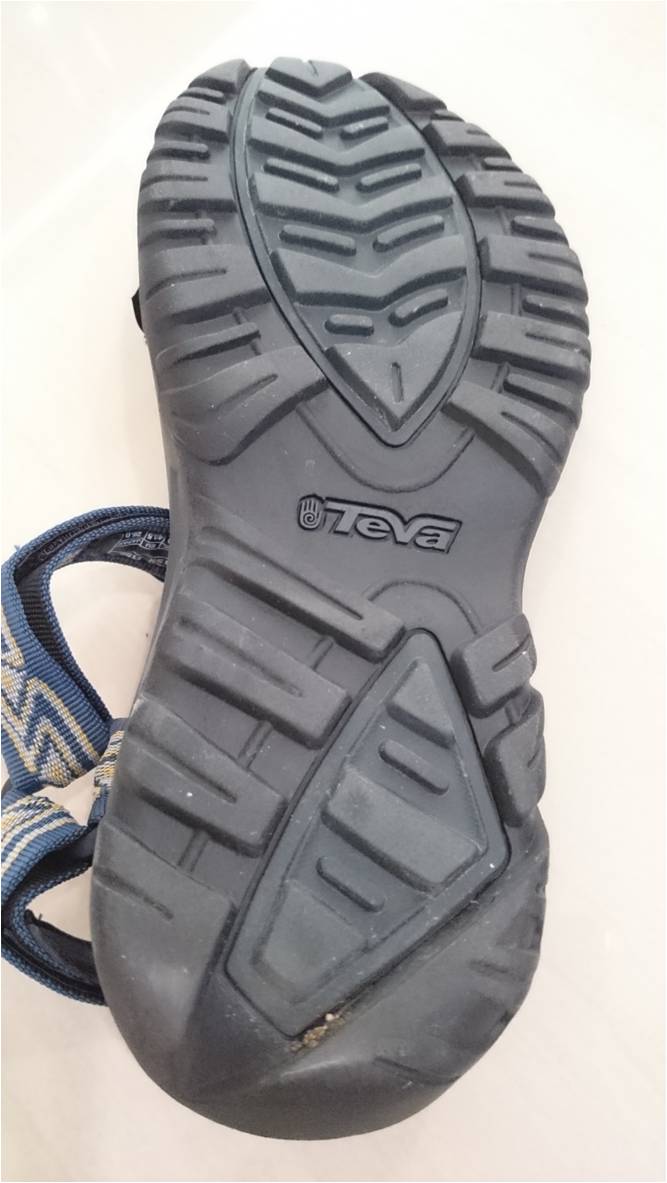 Sole of a sandal with deep grooves that runs across its width |
Similar to trekking shoes, the sole of a trekking sandal needs to have relatively deep grooves that run across its width to provide the necessary traction. Grooves running across the width of the sandal are excellent for holding onto the ground in forward motion. The sole should also be made out of non-slip and durable material to prevent slipping on wet surfaces and to withstand the rough treatment.
Footbed/insole
On an inclined slope, the foot may have a tendency to slip forward or backward if the footbed of the sandal is wet and slippery. Given that the foot is held onto the sandals by just a few straps, it is better to have footbed or insole of the sandals textured so that the sole of your feet will slip less when wet. When trekking up an inclined slope, walking becomes very difficult and dangerous when your foot does not have sufficient traction on the footbed of the sandals although it is still supported by the heel strap. Footbed with textures and grooves allows water to drain beneath the surface so that your sole maintains good contact with the footbed.
Secure system
Most straps on the sandals are secured by buckle, clips or Velcro. Any of these systems works fine in most circumstances. However, if the sandal is to be used on sandy or muddy areas, buckle or clip system may be better. If the mud and sand are trapped in the Velcro, the Velcro may not function until the trapped particles are removed. It is also difficult to dislodge all the sand that are trapped in the Velcro during cleaning.
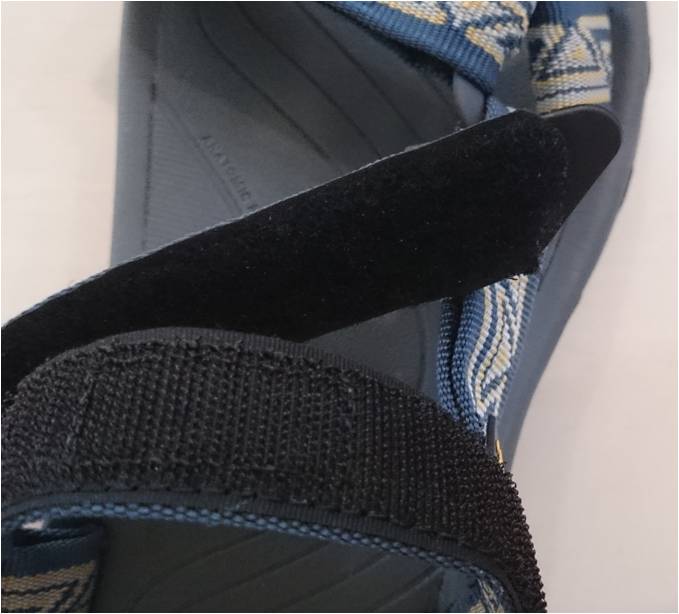 Closure strap using Velcro which is prone to picking up sand and dirt. |
